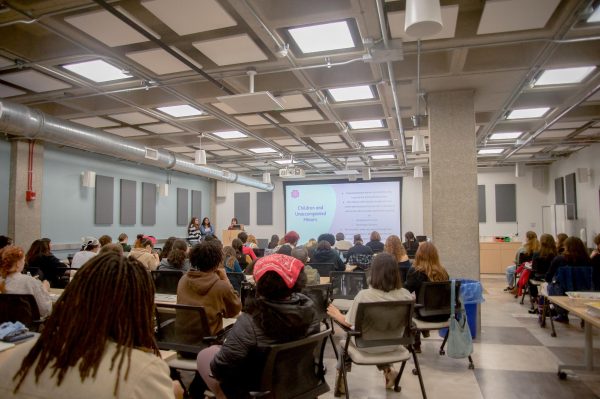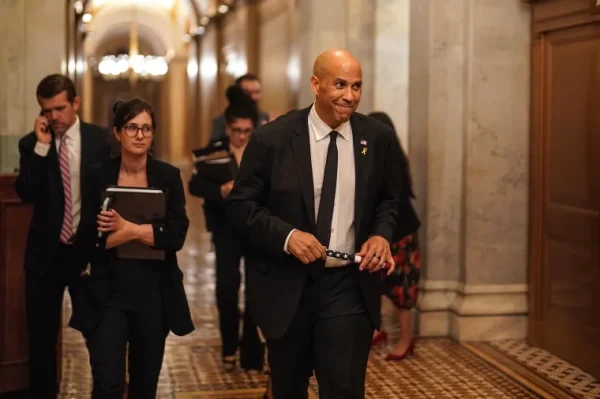A “Mono-racial” Perspective on Junior Practicum
“Pls, Ain’t nobody reading all that,” I typed with tired fingers gliding across my keyboard. A white person had typed a whole thesis on why my opinions on gentrification and racism were wrong. We were a week into Junior Practicum and this was the first of many exhausting interactions I was to have with white students through a digital wall, and I am officially done. As someone who grew up in Southeast Washington, D.C., I have not only read about social justice issues such as racism and gentrification but also experienced them firsthand. I sat in complete rage as I watched the chat fill with arguments about whether gentrification was a class or race issue — or both. Someone even went so far as to say racism isn’t defined by experience but by the dictionary. Huh?
I am typically an extremely vocal student, the kind who sits in the front of class and raises their hand a lot. I think this is largely due to the fact that I can count on my hand the number of classes taught by white professors I’ve taken since my first year. I can also proudly say that as an Africana Studies major, I’ve never been in a class where I am the only Black student present. I find great comfort in looking across a room — or in the case of Zoom University, across a screen — and seeing familiar faces, Black faces. Even if I don’t know the individual personally, I find some sort of comfort in knowing that we share an experience across our racial identities that gives us an unspoken bond.
To my knowledge, I am one of about three Black students in my almost sixty-person career community. Because of this, I am rarely placed in a breakout room with another Black person. Talking about sensitive issues such as reproductive justice, gentrification, and the prison-industrial complex — many of which I have experienced the effects of first hand — is already anxiety-inducing. Being required to talk about my “positionality” within these issues and “what keeps me up at night” in small groups of white people can be extremely scary; especially when these white people are demonstrating hostility and blatant disrespect. With a pain in my chest, I wonder if they would be this bold, this confrontational, if we were in the same physical space? Probably.
The most disturbing part of practicum so far (granted, we’ve been at this for a week) was the identity-based workshop that took place on Monday, Sept. 14. The juniors involved in practicum were split between two affinity spaces, one for white students, and the other for students who identified as Black or people of color. The meeting began with the facilitator giving a lecture on the history of race in the U.S., referring to enslaved Africans as “slaves” and asked us to identify ourselves as either “mono-racial” or “multi-racial”; which is, for lack of better words, extremely problematic.
At the first utterance of controversy, students began to fill the Zoom comments with valid questions and concerns, most of which were dodged or completely ignored by the facilitators. To add to their unprofessionalism, the facilitators also seemed to be unconscious of their own privilege within the discussion. One mentioned that she was “ascribed white, but avowed multiracial,” which was, in my opinion, code for “nobody can tell I’m mixed unless I say so.” In her section of the presentation about colorism, she centered herself (a white-passing individual) by complaining about how she was “tokenized” in the workplace. When we raised concerns about how centering herself in this discussion could be considered colorist, she seemed extremely shocked that we perceived her as white. At a different point in the workshop, the facilitator in question used the term “monoracism.” To be quite honest, I’m still not really sure what that is; to my understanding, it’s racism against people who are racially ambiguous and/or white-passing, making them feel isolated because they don’t identify with the race that they are “ascribed.” Again, centering whiteness.
What was mind-boggling to me was that while we were in the workshop, I was sent text messages that the white affinity space (which sounds funny to type) was listening to — wait for it — forest sounds while reflecting on their white fragility. They were given opportunities to speak on their experiences and meditate with their thoughts while we were being lectured on racism — as if we don’t experience it daily.
If it weren’t for the support of faculty leaders such as Associate Dean of Students Dana Hamdan and insightful speakers such as Jessica Horn, who remind me that representation exists, even if on a small scale, I would’ve probably quit practicum by now. It’s the feeling of hands shaking, cheeks filling with heat, and the loss for words that overcomes me when I experience marginalization on this scale, in this way, that makes me feel like I want to give up. Maybe this is the baggage that comes with being Black at a predominately-white institution, a reality I don’t think I’ve had to confront alone before.
Typically, in situations where I feel the stress of being in a white-dominated space, I return to Afrikan Heritage House, eat a meal with people I love, and feel whole again. Now, I sit in silence, alone in front of my screen as I try to unpack all of my complex feelings about these “complex problems.” What makes this experience so difficult is that Black students and students of color don’t currently have access to the support systems that existed on campus. If this practicum were to happen again in the future, I think it would be beneficial to form those kinds of communities for students to discuss their feelings in a space that actually feels safe. I understand the first time won’t always be perfect, so if there’s a second, I hope it will be better.



